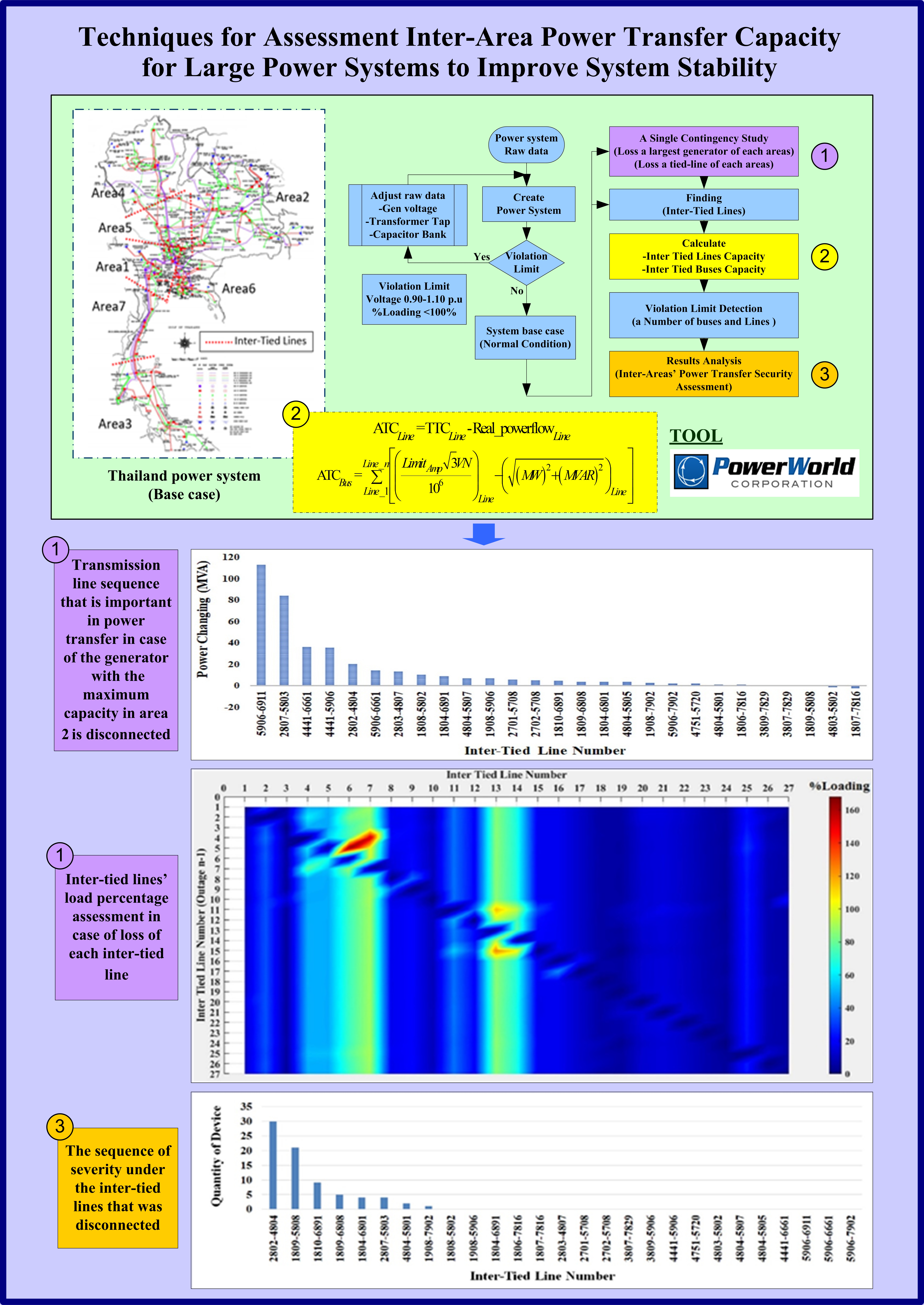Techniques for Assessment Inter-Area Power Transfer Capacity for Large Power Systems to Improve System Stability
Keywords:
Power Transfer, Inter-Areas, Contingency n-1, Large Power Systems, System StabilityAbstract
This research presents a technique for assessing the power transfer capacity inter-areas of large power systems for improving system stability. In this study, an assessment of the inter-area power transfer capacity was determined by the maximum capacity of an inter-area bus under the thermal limits of all transmission lines connected to the bus. The results of this research were to compare the power transfer capability of each inter-area bus under normal conditions and compare the capability of the transmission lines to connect between areas under the system of loss of 1 device (Contingency n-1), which consisted of 2 cases. The first case is that the system causes the loss of the generators with the highest capacity in each area and the second case is the loss of the transmission line between the areas. In addition, the severity of the area-to-system interconnect transmission line will be compared if disconnected by considering the number of buses and devices that violate the control parameters of the power system, which in this study used the Thailand power system as a system that based on the study and analysis by using the Powerworld simulator program. The results showed that this technique could indicate the power transfer capacity between each area and the capacity of each transmission line connected between the areas, both the system under normal conditions and the loss of 1 device (Contingency n-1), including the ability to sequence the severity of the transmission line affecting the system, which this information can be used to plan the power flow control for the purpose of improving the stability of the power system.
References
[2] S. Ravindra, V.C.V. Reddy, S. Sivanagaraju, Power system severity analysis under generator outage condition, International Journal of Advanced Research in Electrical, Electronics and Instrumentation Engineering. 4 (2015).
[3] W. Chaisit, W. Narumon, B Churirut, T. Chivalai, C. Chai, A novel transmission line’s ATC assessment method by considering the generation dispatch limit (GDL) and renewable generation capacity with power flow sensitivity analysis, International Journal of Intelligent Engineering and Systems. 12 (2019) 179-189.
[4] North American Electric Reliability Council (NERC). Available transfer capability definitions and determination. NERC Report. 1995. https://www.nerc.com.
[5] S. Dong-Joon, L. Hyo-Sang, O. K. Jin, Quantification Method of TRM (Transmission Reliability Margin) Using Probabilistic Load Flow, IFAC Symposium on Power Plants and Power Systems Control. 36 (2003) 679-684.









